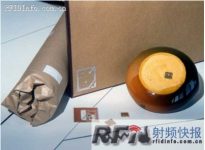
Malaysian museums use RFID tags to track and manage cultural relics
[ad_1]
The Malaysian Museums Authority (DMM), which manages more than 20 museums across the country, will use RFID technology to help manage cultural relics more effectively and better identify and track displays of clothing, ceramics, weapons and artworks. Many cultural relics are kept under the museum where humidity and temperature can be controlled. These cultural relics are often shared between museums, and the RFID system will assist in tracking the entry and exit of cultural relics across museums.
The Malaysian government has always hoped that Malaysia can become the development center of RFID electronic label technology. Through a government tender, the Solmate software designed by CBS Technology Corporation (headquartered in Kuala Lumpur), a supplier of RFID museum management software, was finally selected. Currently, CBS is working with partners to develop related software. The RFID project began in December 2006, marking 1,000 cultural relics; in April this year, the RFID project for museum storage shelves began to run.

RFID can be used to identify and manage cultural relics

Malaysian museum attaches RFID passive high-frequency tags to cultural relics

The Art Collection of the National Museum of Malaysia
At present, cultural relics are identified using RFID paper tags. Museum staff write ID numbers and other information, such as the owner and expiration date of the cultural relics, on the tags. Then tie it to the artifact with a rope through the small hole on the tag. Some data about these cultural relics are in digital form, but there is no connection between the handwritten data on the label and the database of related cultural relic data and facts. The CIO of CBS said that cardboard tags often slip off cultural relics due to damage to the threaded holes.
The Ministry of Museums of Malaysia has considered barcodes, but finally chose to use RFID tags because of the flexibility of its shape and size design. The department is working with CBS to design a special passive RFID cultural relic tag. For example, the RFID tag is sewn into a piece of cultural relic clothing-belonging to an 18th century sultan.
In the first phase of the project, CBS trained Malaysian museum staff on how to attach RFID tags to cultural relics. Workers generally use 13.56MHz high-frequency RFID tags made of flexible plastic and follow the ISO 15693 standard. The staff uses specially designed ropes that will not damage the cultural relics (RFI D radio frequency bulletin: the design of the rope is compatible with the type of cultural relics) to hang tags on the cultural relics. When using plastic labels, it is not as easy to break holes with a rope as with paper labels.
When labeling cultural relics, the staff sits at the table and uses fixed RFID technology to record the cultural relics into the database and encode the information on the tags. The ID number, type, owner, and storage location information of the cultural relics are all written into the tag. When the cultural relic is put back on the appropriate storage shelf, the staff shall scan the label with a handheld reader, and then connect it with the appropriate shelf number displayed on the shelf label within the database.
When the National Museum receives a loan application from another institution, they write the application into a computer system that displays the storage location of the cultural relics and the shelf label number of the stored cultural relics. When a staff member holding an RFID reader arrives in a specific area, he can read all the cultural relics within the effective distance of the reader. In the past, because many cultural relics looked similar, it took up to two hours to determine the location of a particular cultural relic.
Once the location of the cultural relic is determined, the staff can find the cultural relic based on the sound of the reader and take it to the transfer area where the manager approves the application. The cultural relics are then packaged and transported. Before they are transported away, their tags will be read by a desktop RFID reading and writing machine placed at the exit again. The computer system will record when the item occurred and which museum it was sent to.
When the cultural relics were returned to the National Museum, the workers read the cultural relic label again before the cultural relics were returned to the warehouse. CBS CIO believes that although the return on investment (ROI) is not calculated for this project, there is no doubt that RFID-based systems can improve productivity and work efficiency.
[ad_2]




